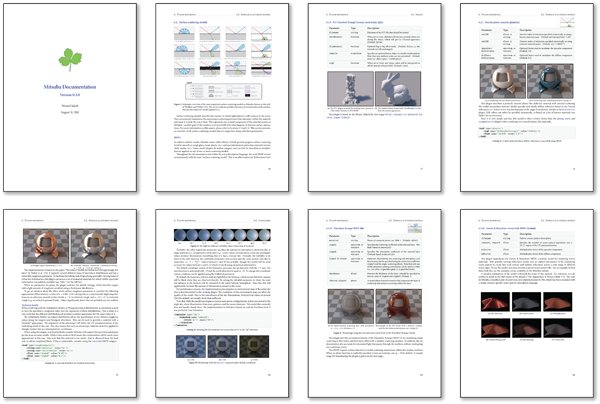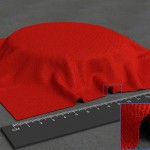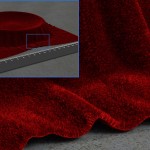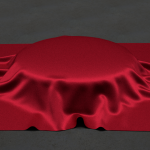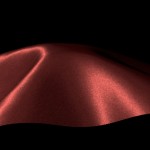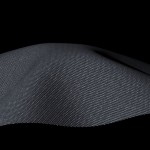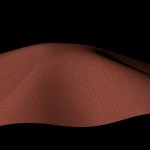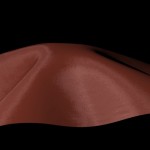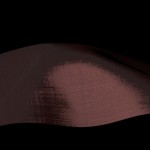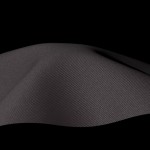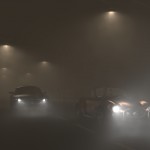I’ve just released Mitsuba 0.3.0! In hindsight, my previous announcement of a release within 1-2 weeks clearly turned out to be a bit too optimistic… But I hope that it was worth the wait. In addition to all the previously mentioned features, I’ve worked on the following changes:
Python integration: Mitsuba 0.3.0 comes with Python bindings. While the bindings don’t expose the full C++ API, they are already good enough for controlling the renderer, dynamically constructing scenes, and many other useful things. Chapter 11 of the documentation contains a basic overview and several “recipe”-type examples. My main motivation for adding bindings is to reduce the amount of work that is necessary to integrate Mitsuba into commercial modeling tools. I found that since I don’t do any modeling myself, I’m not particularly good at developing such plugins :). I hope that a solid Python API will lower the bar enough so that someone else can give it a shot and succeed.
Integrator overhaul: Some of the integrators in Mitsuba (photon mapping variants, irradiance caching, subsurface integrators) have become somewhat broken due to the many changes that happened over the last months. These are all fixed in the current release. In addition, the photon map-based integrators are now about twice as fast, which is a consequence of switching to a more optimized generic point kd-tree implementation.
Preetham sun/sky & Hanrahan-Krueger models: As part of his thesis (link) on realistic rendering of snow, Tom Kazimiers has developed a great series of extensions to Mitsuba. I’m planning to eventually merge most of them. For now, I’ve added his implementation of the Preetham sun/sky model, as well as an implementation of the Hanrahan-Krueger BSDF (which is an analytic solution to single scattering in a layer of a homogeneous medium). Marios Papas greatly extended the H-K model implementation and verified its correctness against reference simulations.
API reference: A nightly process now creates API documentation for the most recent Mitsuba version. Take a look at http://www.mitsuba-renderer.org/api. The API documentation is also linked from the main Mitsuba web page.
Better builds: I’ve grown a bit tired of making release builds and packages for various platforms, since it tends to be a tedious manual process.
To reduce this burden, I’ve set up seven virtual machines that automatically download the latest version of Mitsuba, compile it, and upload packages for:
- Windows (x86 and x86_64)
- Mac OS 10.6+ (universal binary for x86 and x86_64)
- Ubuntu 10.10 — maverick (x86_64)
- Ubuntu 11.04 — natty (x86_64)
- Debian 6.0 — squeeze (x86_64)
- Fedora Core 15 (x86_64)
- Arch Linux (x86_64)
This set should hopefully cover almost everyone (I’m assuming that any sane Linux user has made the switch to 64-bit at this point). Most of the packages also include development header files, which makes it possible to create custom Mitsuba plugins without ever having to compile the main codebase.
The Windows and MacOS X builds are compiled using the Intel C++ compiler 12. This means that OpenMP now finally works on OSX! (Apple has been shipping a seriously broken version with their compiler for years..)
Since the entire build process is now automated, you can expect to see more frequent releases in the future — I might even switch to a nighly build system at some point.
Future license change: I intend to switch Mitsuba’s license to the more liberal LGPL license (a.k.a. the “lesser GPL”, or “library GPL”) at some point in the near future. This will essentially allow users to write proprietary plugins or link Mitsuba to external applications without having to release their source code. Only changes to the renderer itself would need to be made available. I believe that this is a good compromise between making the system available to a larger group of users, while benefiting from any improvements that are made. The transition will involve getting permission from a few more people, rewriting code, and replacing certain dependencies. For that reason, it might still take a few months. Stay tuned…
Better documentation coverage: A huge amount of work went into the documentation, which now covers many previously undocumented plugins. While still far from complete, it’s at a point where it can serve as a good starting point and reference for every-day use. Be sure to check it out if you are using or evaluating the renderer in any way.
